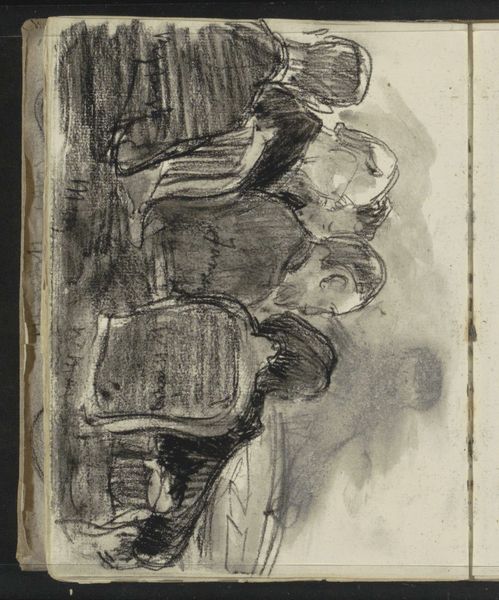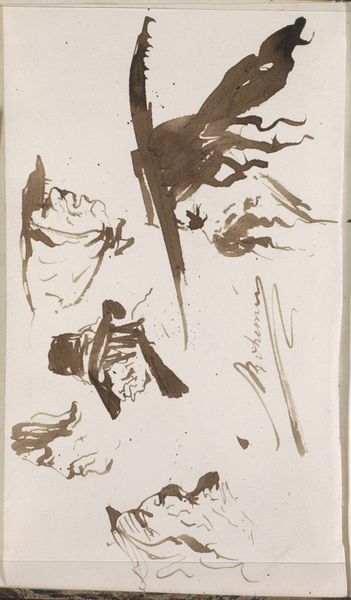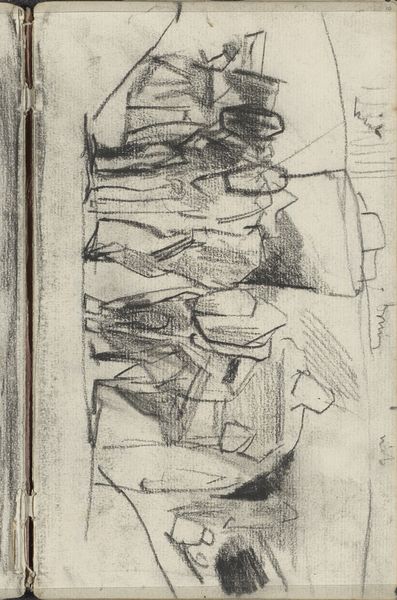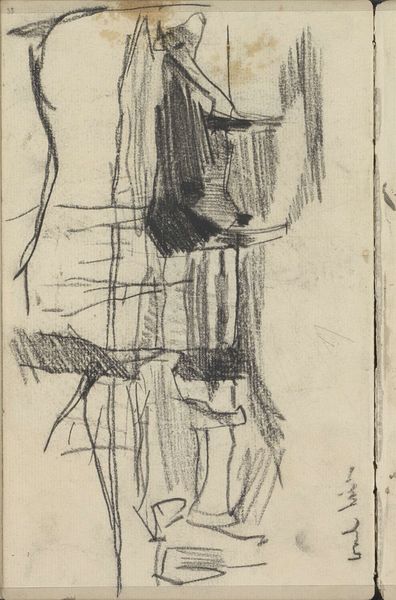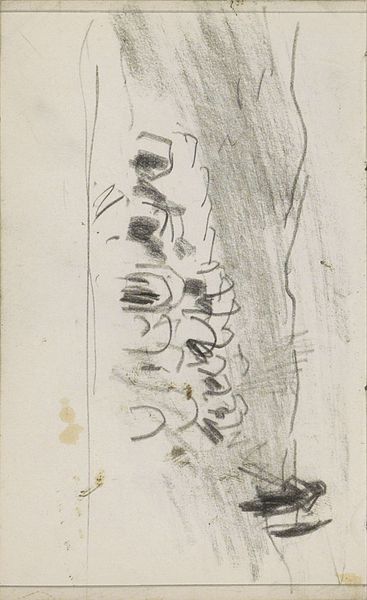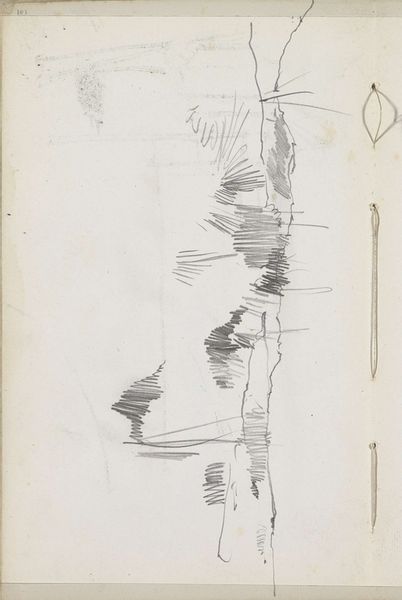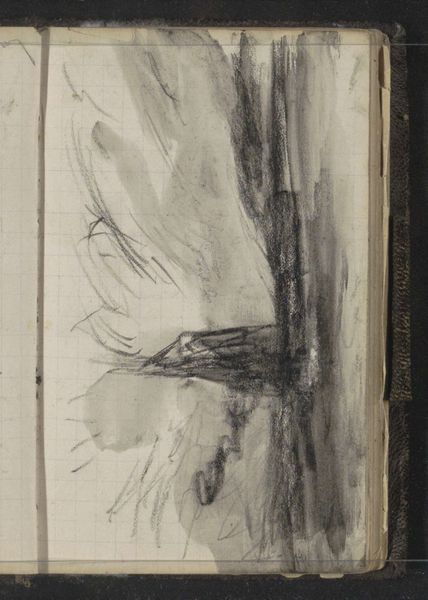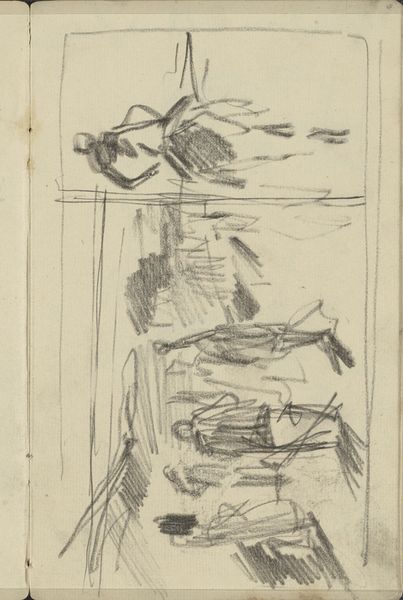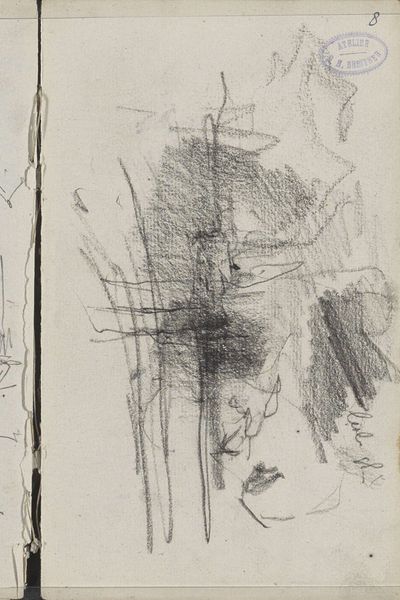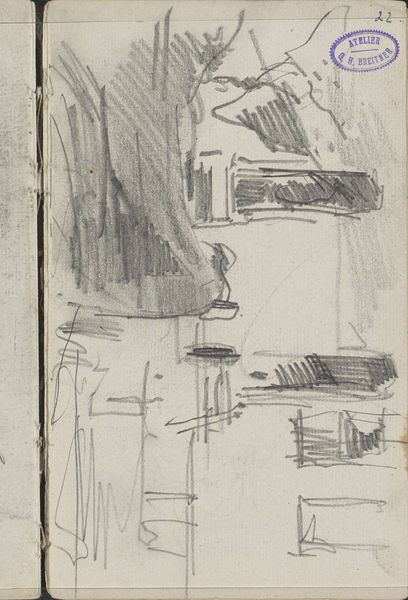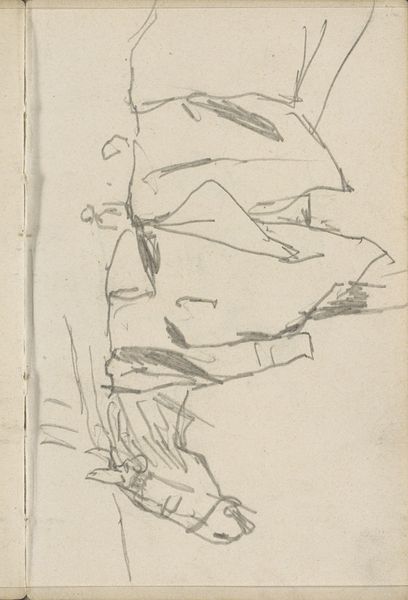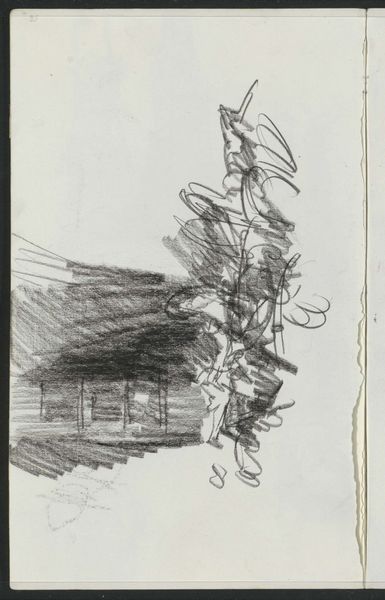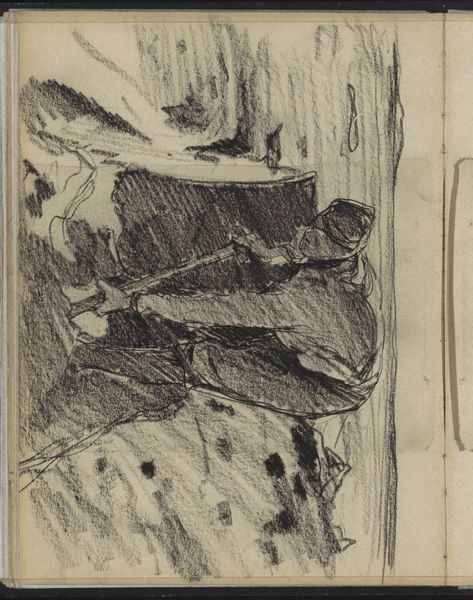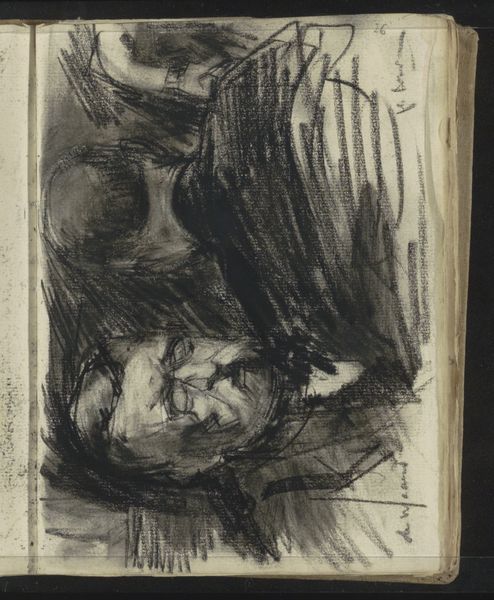
Man met lange haren en een wandelstok in een versleten mantel 1858
0:00
0:00
johannestavenraat
Rijksmuseum
Copyright: Rijks Museum: Open Domain
Curator: Welcome. Let’s observe this 1858 pen and ink drawing by Johannes Tavenraat. It’s titled "Man met lange haren en een wandelstok in een versleten mantel," which translates to “Man with long hair and a walking stick in a worn coat.” What are your initial thoughts? Editor: My first impression is melancholy. There’s a spectral quality to these figures; they appear like ghosts layered upon each other. The lines are so fluid and the ink bleeds in such a way that they seem to fade into the background, as if on the precipice of disappearing entirely. Curator: That sense of transience resonates with the context of the work. This isn’t a formal portrait meant for public display; rather, it seems to come directly from the artist's personal sketchbook, a space for intimate observation and experimentation. Consider the social implications. What kind of commentary is being suggested on the status of ordinary working men, as recorded in Tavenraat’s sketchbook? Editor: I see your point. The repeated image almost anonymizes the figure, yet it still feels intimate. The ‘worn coat’ suggests poverty or at least a lower social class. It evokes questions of visibility and representation – who gets remembered, who gets a formal portrait versus a fleeting sketch? It reflects a stark socio-economic divide. Curator: Precisely. And we see an interesting technique at work. Notice the expressive use of ink. The swift, confident strokes articulate the man's form, his stance, and the folds of his coat. Editor: Yes, the artist's hand is very present. The immediacy of the pen strokes adds to that sense of quiet observation, but it also seems incomplete or hurried, hinting perhaps at the fleeting nature of these encounters within the artist’s broader scope. I wonder, was Tavenraat engaging with early forms of social realism by depicting everyday working men? Curator: He was working within a society undergoing vast transformations. The seeds of photography were blooming. Artists, in turn, were grappling with representation in a modernizing world. How to portray humanity, class, and lived experience – it all was in flux. Tavenraat captures that perfectly. Editor: Absolutely. It makes you consider all those stories of everyday life and how their echoes still resonate through art history. Thank you, this brief look was illuminating. Curator: A thought-provoking consideration indeed. It adds complexity to our understanding of artistic expression and representation in a historical context.
Comments
No comments
Be the first to comment and join the conversation on the ultimate creative platform.
